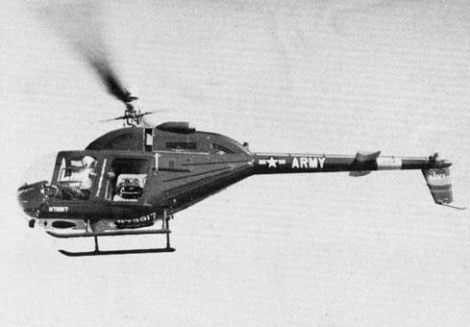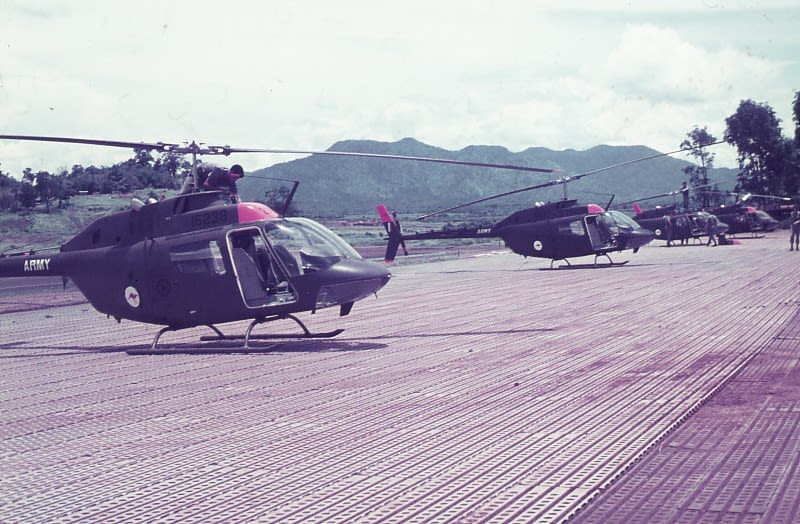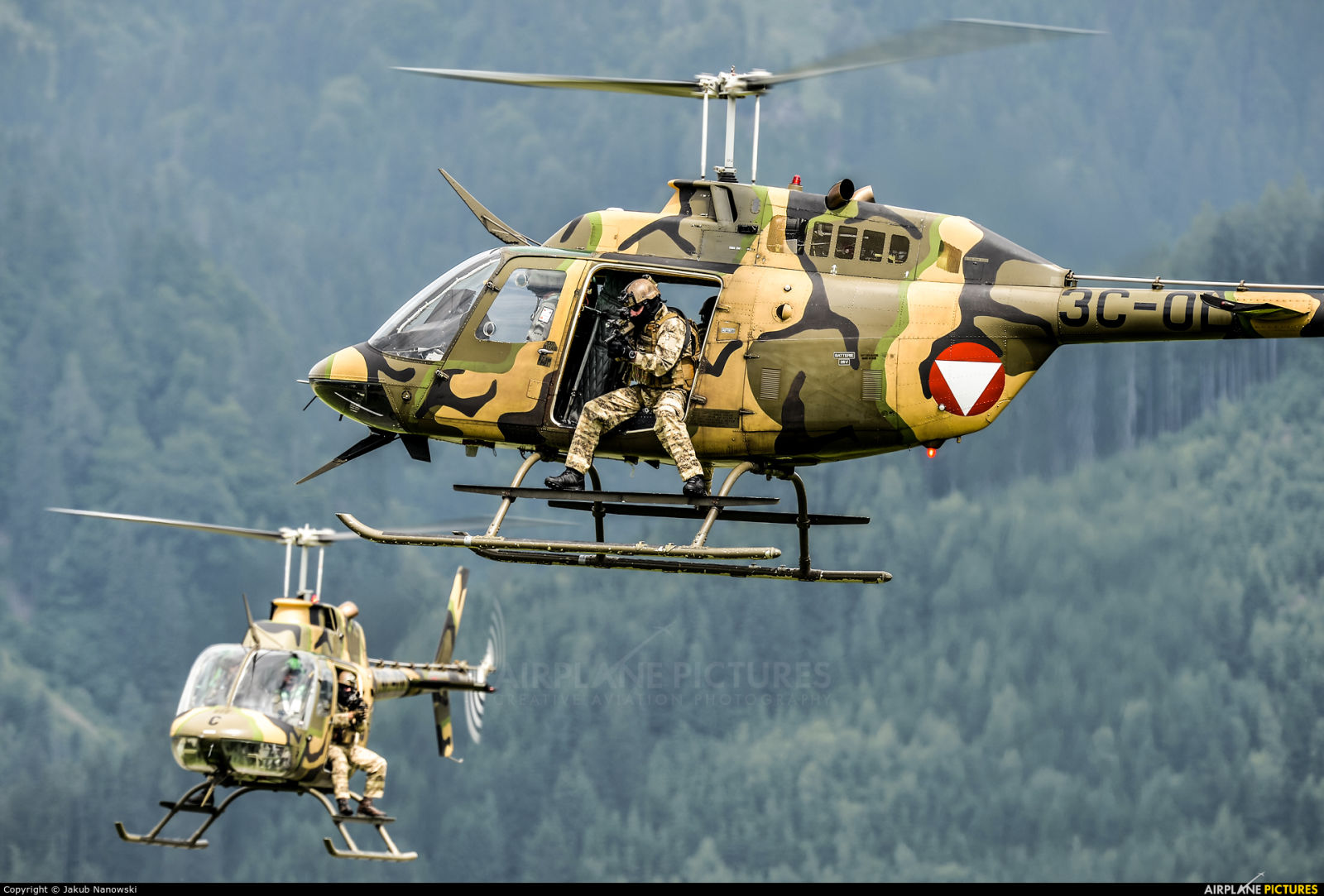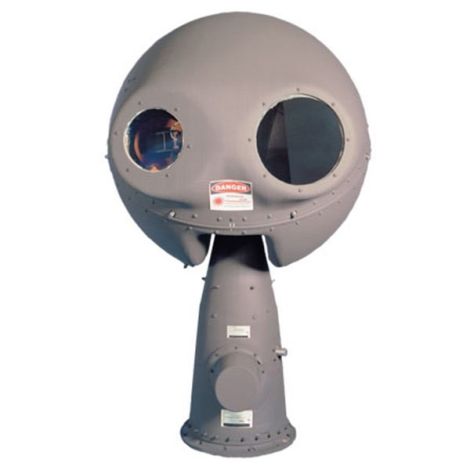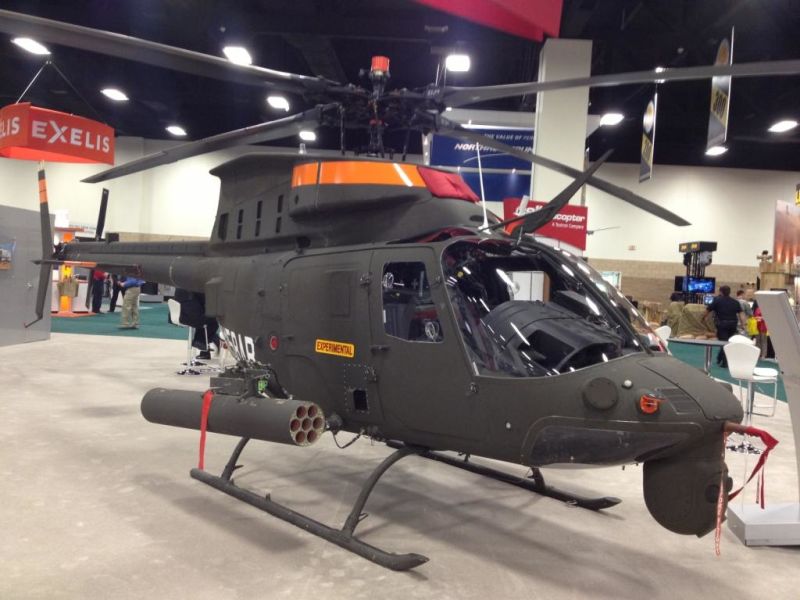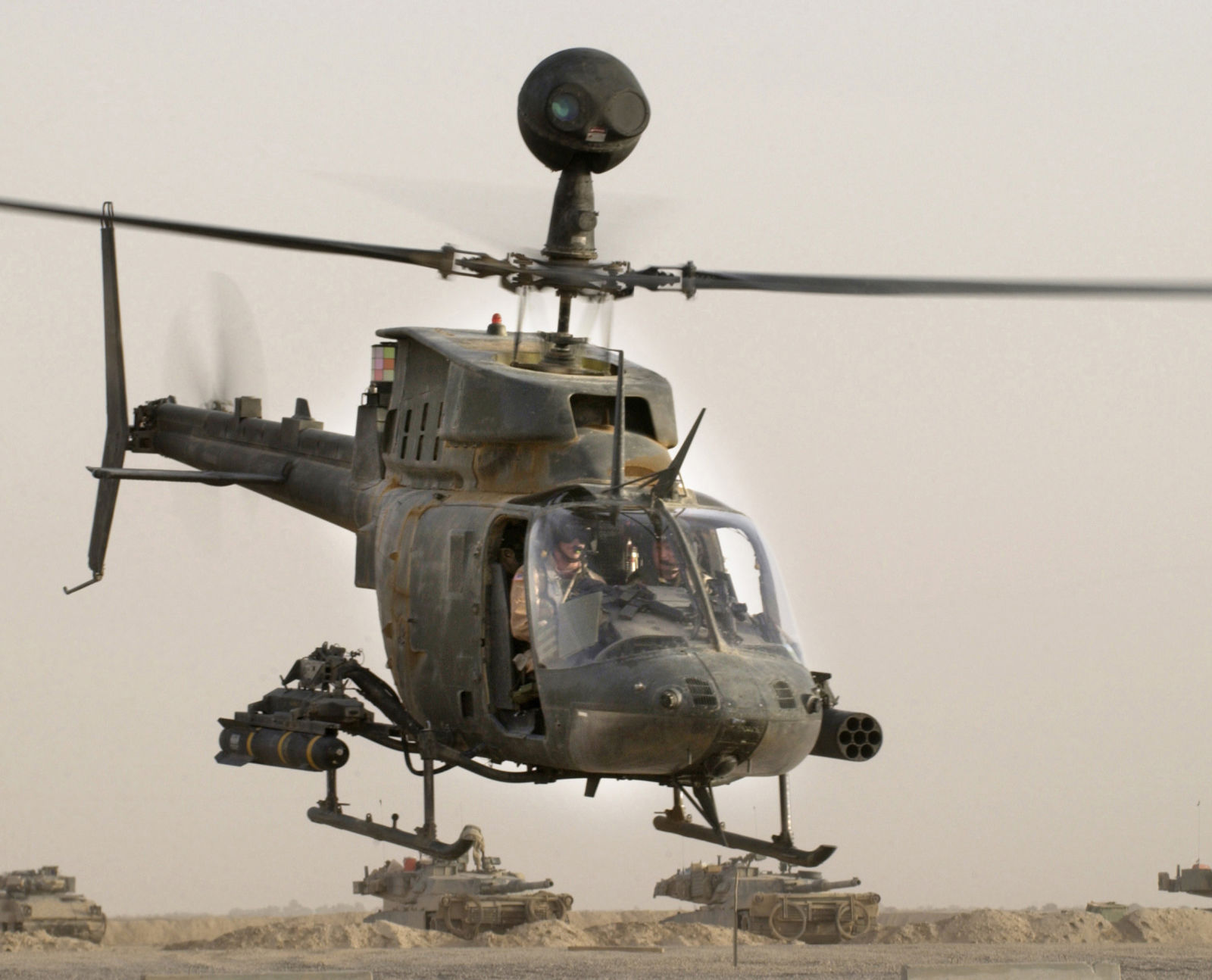
The Bell OH-58 Kiowa traces its history back to the US Army’s 1960 Light Observation Helicopter program. Thirteen companies entered the competition, with Bell advancing its Model 206, also known as Design 250 (D-250). The Army announced that Bell, Hughes and Fairchild/Hiller had won the initial competition, and designated the 206 as the YHO-4 (later changed to YOH-4A).
The OH-4 lost out to the Hughes OH-6 Cayuse, but Bell took the Model 206 and began to refine the chopper, adding 16 cubic feet of room in the back as well as making it a little more aesthetically pleasing, resulting in the Model 206A, nicknamed the JetRanger. In 1967, Hughes was unable to meet contractual obligations for the OH-6, and the US Army reopened the LOH competition. Bell submitted a bid with the new 206A, under cutting Hughes and wining the contract. The Model 206A was designated OH-58, and, following Army custom to name helicopters after Native American tribes, was named the Kiowa.
Production OH-58A models began arriving in Vietnam in August of 1969, in many cases operating alongside the OH-6s that they ostensibly replaced. Many were fitted with M134 Miniguns, giving them some measure of firepower. In addition to orders from the US Army, eight Kiowas were leased to the Australian Army, and 74 were delivered to the Canadian Armed Forces as the CH-136 Kiowa. Beginning in 1978, OH-58As were converted to OH-58C standards.
The OH-58B was an export version for the Austrian Air Force, and was also produced under license as the CAC CA-32 for the Australian Army and Navy.
The OH-58C was fitted with more powerful engines, as well as IR suppressors to shield the exhaust from SAMs. The OH-58C were also fitted with the passive wire strike protection system, blades fixed to the upper and lower fuselage to cut wires before they entangle the skids or rotor shaft; the Kiowa was first helicopter so equipped. OH-58Cs were equipped with larger instrument panels, and the panels and cabin lights were compatible with night vision goggles. The Kiowa were the first U.S. Army scout helicopter to be equipped with the AN/APR-39 radar detector, a system which allowed the crew to know if they were being “painted” by enemy radars.

In 1975, the US Army, anticipating the replacement of the AH-1 Cobra by the AH-64 Apache, developed requirements for a new Advanced Scout Helicopter which would:
“...possess an extended target acquisition range capability by means of a long-range stabilized optical subsystem for the observer, improved position location through use of a computerized navigation system, improved survivability by reducing aural, visual, radar, and infrared signatures, and an improved flight performance capability derived from a larger engine to provide compatibility with attack helicopters”
Congress provided no funds for the ASH program, however, and in 1979 the Army decided to shelve it in favor of the Near-Term Scout Helicopter (NTSH) program, which would utilize existing designs fitted with Mast-Mounted Sights (MMS) instead. Bell offered their Model 406 while Hughes proposed an upgraded 500D, the improved civilian version of the OH-6. In 1981 the NTSH had resulted in the Army Helicopter Improvement Program (AHIP), and in September of that year Bell was awarded a development contract for the OH-58D.
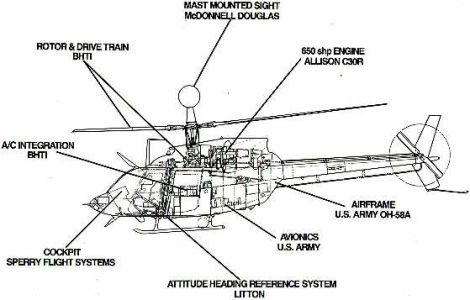
The most distinctive feature of the OH-58D Kiowa is the MMS, originally developed by McDonnell Douglas, through mergers production of the MMS has passed to Boeing, then to Leonardo DRS. Perched atop a pylon above the rotors, the beach-ball shaped sight is gyroscopically stabilized and mounts a TV camera with low-light capability, a thermal imager, and a laser rangefinder/designator.
Being mounted above the main body of the helicopter, the MMS allows a Kiowa to hide behind a terrain feature, but maintain surveillance of a target, or, if working in concert with an attack chopper, the spotter can designate a target for the AH-64's Hellfire missile while both helos are behind cover.
OH-58Ds were deployed to the Persian Gulf in 1988 as part of PRIME CHANCE, the escort of oil tankers during the Iran–Iraq War, and were also involved in JUST CAUSE, the 1989 invasion of Panama. As part of DESERT SHIELD and DESERT STORM, 115 Kiowas were deployed to Saudi Arabia and Kuwait, achieving the lowest ratio of maintenance hours to flight hours of any combat helicopter in the war. Based of experiences from these conflicts, the Army began the Kiowa Warrior program, which involved fitting first new build aircraft and later retrofitting existing OH-58Ds with modular weapons pylons on both sides of the aircraft, allowing the mounting of M296 .50 caliber machine gun pods, Hydra-70 unguided rocket pods, AIM-92 Stingers for self defense and AGM-114 Hellfire missiles, allowing the Kiowa Warriors to act as armed scouts.
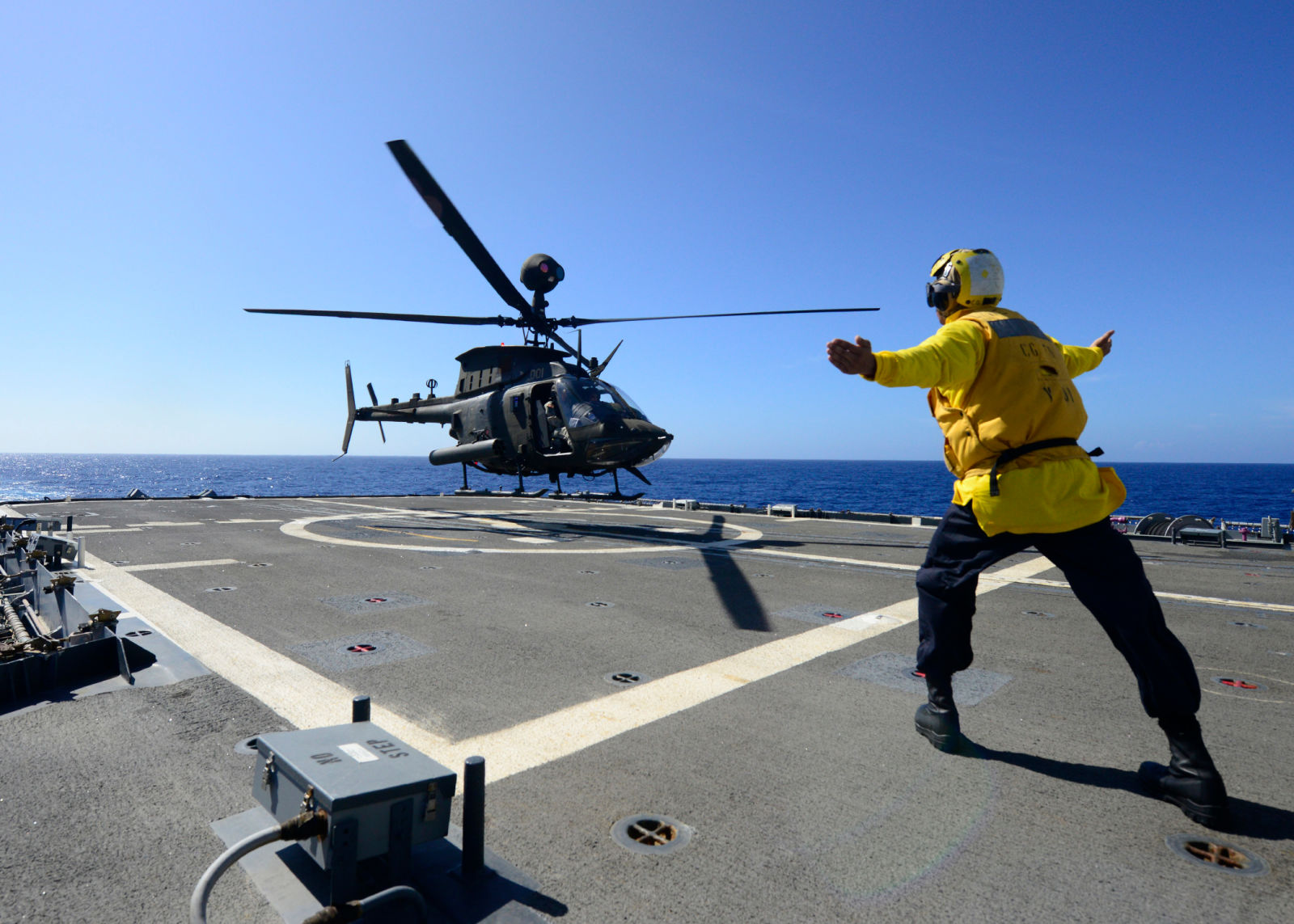
OH-58Ds were again deployed during Operation Iraqi Freedom in Iraq and Operation Enduring Freedom in Afghanistan, amassing 72 and 80 flight hours per month respectively. This also marked the last combat deployment of the Kiowa, which was retired beginning in 2013, with the last OH-58C trainers expected to be withdrawn some time in 2022.
Replacement of the OH-58 was first anticipated with the LHX program in the early 1980s, but the 2004 cancellation of the RAH-66 Comanche undid those plans. Cost overruns also killed the Bell ARH-70 in 2008, which was also due to replace the Kiowa. In 2012, the Army tried again with the Armed Aerial Scout program, which looked at the AH-6i, AAS-72X/X+, MD 540F, Sikorsky S-97 Raider and AW139M as possible replacements, as well as the OH-58F, which incorporated new engines as well as numerous avionics upgrades, as well as a new nose-mounted sensor array in place of the MMS.
The AAS program fell to cost issues, and the Army divested itself of the Kiowa fleet as a cost-saving measure, with the scout duties carried by drones and the AH-64E. In 2018 the Army began the Future Attack Reconnaissance Aircraft (FARA) program, with the AVX/L3 CCH, Bell 360 Invictus, Boeing, Karem Aircraft, and the Sikorsky Raider X competing. On 25 March 2020, the US Army selected Bell and Sikorsky to move forward to develop flying prototypes, with expectations on having a fly-off some time in 2022.
